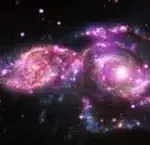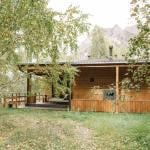 (When there are five Thursdays in a month, such as this month, we feature a “classic” article from SNS’ early years on the fifth Thursday. Today’s article, by B. T. Newberg, first appeared on August 13, 2012.)
(When there are five Thursdays in a month, such as this month, we feature a “classic” article from SNS’ early years on the fifth Thursday. Today’s article, by B. T. Newberg, first appeared on August 13, 2012.)
The Spiritual Naturalist Society brings together naturalistic strands from a wide variety of traditions, from Buddhism to Christianity to Atheism. Is there really anything shared in common by these strands?
I think there is. What’s more, I suspect it’s not just loose resemblance, but something absolutely fundamental. What is it? It’s simply the fact that we explain everything in terms of Nature. Mainstream forms of religions may understand the world in terms of God’s will, Tao, dharma, etc. But naturalistic forms all understand it in terms of nature. For most of us today, that usually means a modern scientific view of nature.
In order to unpack that idea, let’s take a quick crash course in root metaphors.
What is a root metaphor?
All explanations rely on metaphors, explaining one thing in terms of another. A root metaphor is one by which virtually everything else is explained.
According to Loyal Rue, the root metaphor fuses ideas about what’s real and what matters: “The root metaphor renders the real sacred, and the sacred real.” (Rue, 2005)
For example, the mainstream Judeo-Christo-Islamic traditions, which use the root metaphor of God-as-person, ground all ideas about how the world came to be and how we should behave in the creative will of God.
Other traditions use other root metaphors. According to Rue, ancient Greek philosophy uses logos, Hinduism and Buddhism dharma, Chinese religion Tao, and so on.
What I’m proposing is that naturalistic forms of traditions reject these other root metaphors in favor of Nature. This root metaphor may have replaced the others, or always existed side-by-side with them.
Naturalistic forms of religions share the root metaphor of Nature.
Nature the explainer
Evidence for this claim is demonstrable by differences in how we explain things.
The role God plays in the Abrahamic mainstream is explanandus, or explainer (Rue, 1989): Why is the sky blue? Because God made it that way. Why should we love each other? Because God wants us to.
The metaphor of God-as-person succinctly explains how things are (God willed them so) and how we ought to live (according to God’s will).
For naturalists, such a metaphor is no longer credible. Instead, we have come to a point where God is the explanandum, or what needs to be explained: Why does God never mention kangaroos in the Bible? Because the authors of the Bible, all too human, didn’t know about Australia.
Here, a natural explanation illuminates the nature of “God.” Nature has become the explainer.
In Eastern traditions, the conversation gets more challenging, but still works. Here’s a dharmic version from Buddhism: How do we know karma conditions rebirth after death? Because that is the nature of the dharma, which the Buddha perceived.
And a naturalistic version: How do we know karma conditions rebirth after death? Because we experience one moment of consciousness “dying” and conditioning the “birth” of another (birth and death have been redefined in naturalistic terms).
Nature is the explainer, and that’s what we all have in common.
Would you agree? Or is there something else more fundamental that we share?
Subscribe to The Spiritual Naturalist Society
Learn about Membership in the Spiritual Naturalist Society
__________
The Spiritual Naturalist Society works to spread awareness of spiritual naturalism as a way of life, develop its thought and practice, and help bring together like-minded practitioners in fellowship.
__________
B.T. Newberg continues this series: How do you understand nature?
References
Rue, L. (1989). Amythia. Tuscaloosa, AL: University of Alabama Press.
Rue, L. (2005). Religion Is Not About God. New Brunswick, NJ: Rutgers University Press.













